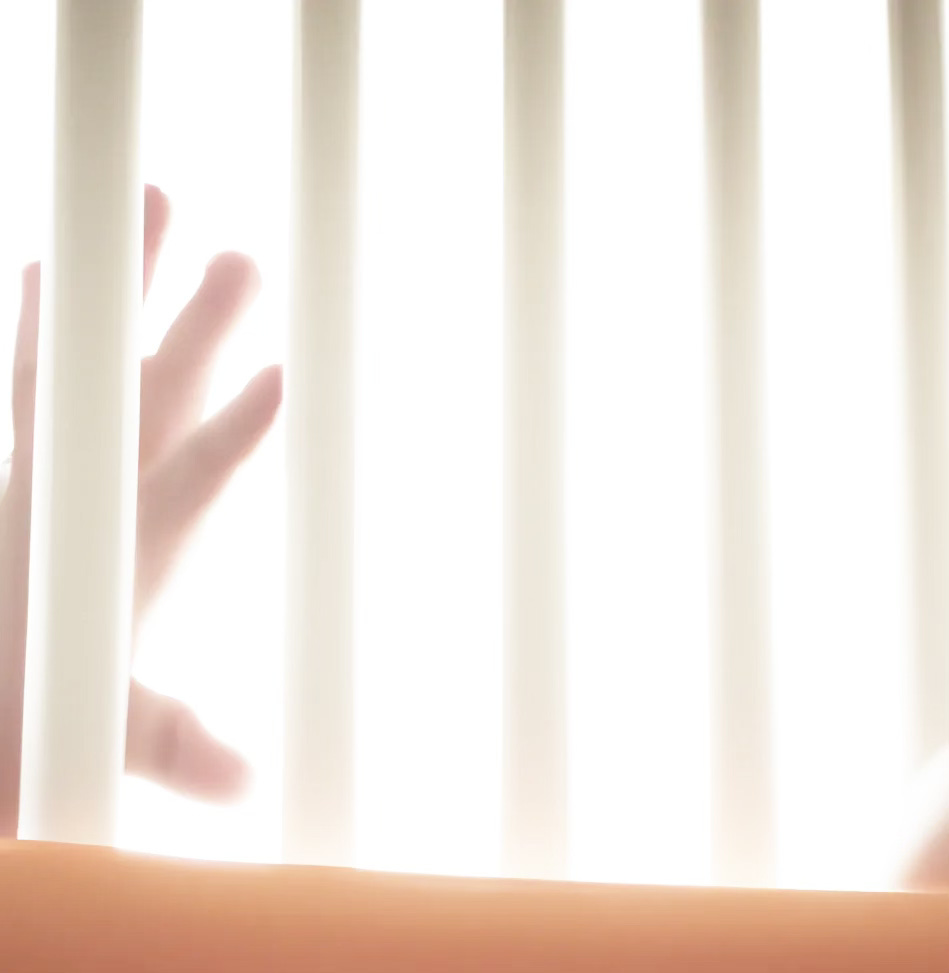The photography professor tells us to download five stock photographs, all of babies with red eyes.
“Newborns appear in the largest percentage of photographs marred by the eyeshine effect,” he says. “But this is understandable.”
The photography professor says across the world. He says pandemic. Photographs of babies are moving toward a single perspective.
The community college classroom windows are nighttime opaque, cut by blades of glare. I can’t see through them. We’re on a boat out of sight of land. Two nights a week, this is exactly how I want to feel.
“Millions of pictures,” he says. “The more that babies want to see through the dark to you, the more vulnerable they are to eyeshine.”
The photography professor’s face is pockmarked. He’s short and tightly packed under his blue Oxford shirts. He grows a beard from his jaw down. He has published two portfolios of his photographs, both of babies. I found them shelved in cute art, not art-art. I believe the lowbrow status of his work only increases its power. His faculty bio claims that he’s a master of the baby-photograph form. I like to think he wrote this himself as the department store portrait studios went extinct, their smeary, pastel backdrops thrown out with the trash.
Childbirth magazines featuring the photography professor’s shoots sell on eBay for around five dollars. I bought a three-pack he titled Only Babies Who Are Happy.
He says, “From the corners of darkened rooms the babies search for you, but you’re already there, standing too close with your flash.”
“Between shots,” the photography professor says, “their eyes grow wide as before, to take in the available light and find you. Again, you have eyeshine.”
My laptop sits before me. I work on the downloaded photographs. One program can trace the babies’ eyes automatically. Another requires me to outline the eyeshine. I prefer to perform the selections myself. My hands never nervously shake in this class. Here, for two hours, I resemble a calm person.
I use the healing tool to stroke away the red. I turn the babies’ eyes into grayscale but preserve the surface reflections and highlights, leaving them ready for the addition of color. I think I have an idea that’s smart, but is also cheating: I reverse image-search the babies to find them in daytime photographs saturated by sunlight. With the dropper tool, I steal color from their eyes.
Two parts of the camera have been named after our physiology: the lens and the reflex. The camera is an extension of the eye. Photography is an extension of memory. Eyeshine on new brides is the most unfair. Eyeshine on newborns is understandable.
The photography professor tells us that a blind person who has never touched a camera can take a beautiful photograph. He has been cataloging pictures taken by the sightless. He says he might publish another book: photographs captioned in Braille. He says that as more cameras are made and more babies are born, it will become difficult to understand photographs that don’t represent people.
The photography professor’s words open a space where I can put a single baby—mine—but I’ve never had a baby. I am sixty-one years old, so my baby is stock, too. No credited father, no credited mother. What mother ever fully is?
I stand over my baby. I press the shutter. Light bursts from my camera. In the photograph, my baby looks back at me with red eyes from between the white, blown-out bars of its crib. Photography is also an extension of longing.
Caged black dogs have incandescent green eyeshine. The fox’s eyes are yellow. Iridescent blue belongs to the horse. Copy and paste sit next to each other on the keyboard, and I steal from everything. I search for happy babies and steal the colors of their eyes. I steal from the mink’s eyes, sapphire, my birthstone shining out from the dark.
Originally published in The Brooklyn Quarterly




